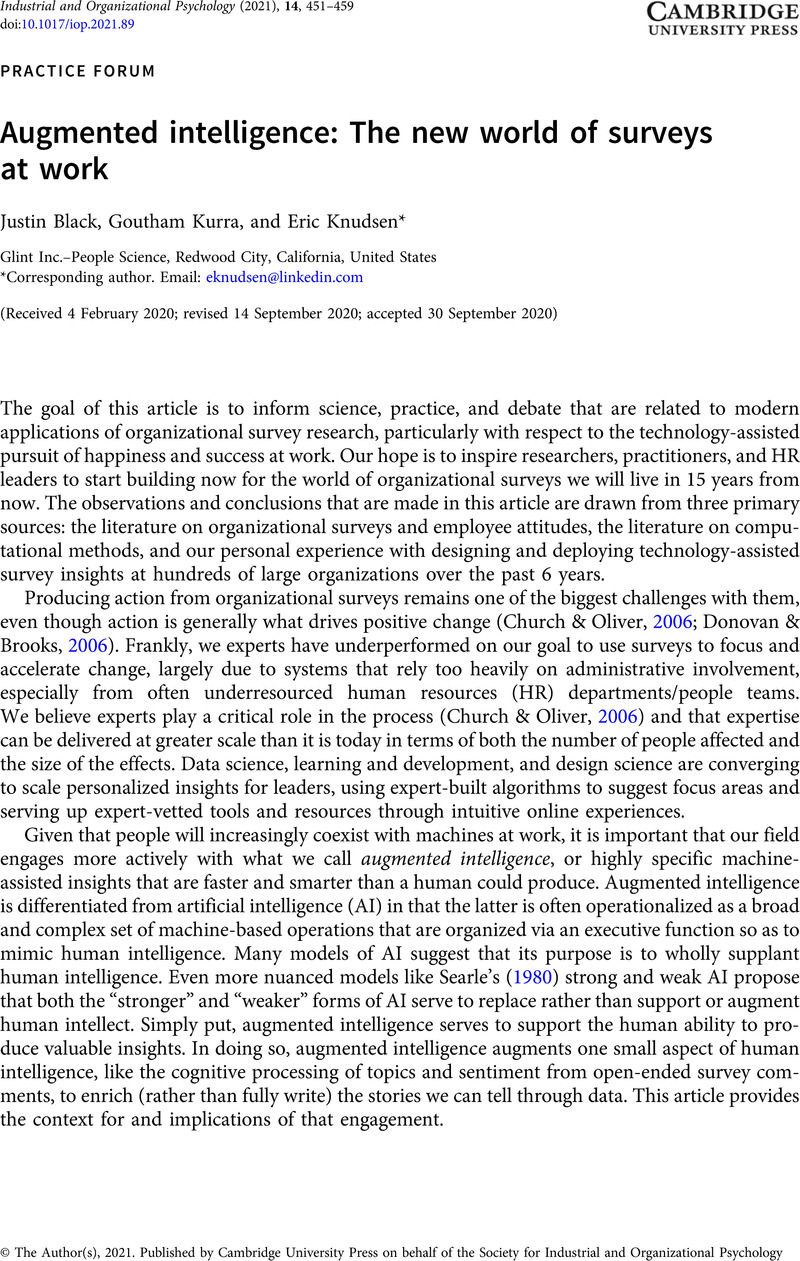Crossref Citations
This article has been cited by the following publications. This list is generated based on data provided by Crossref.
Van der Watt, Marcel
2023.
Discouraging the Demand That Fosters Sex Trafficking: Collaboration through Augmented Intelligence.
Societies,
Vol. 13,
Issue. 4,
p.
94.
Ocal, Ayse
and
Crowston, Kevin
2024.
Framing and feelings on social media: the futures of work and intelligent machines.
Information Technology & People,
Vol. 37,
Issue. 7,
p.
2462.



